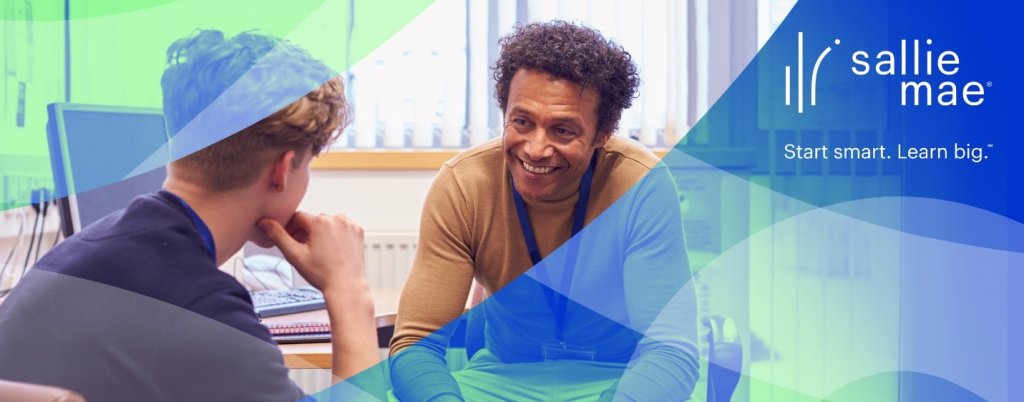What's Trending
How America Pays for College

To help set families up for success as they navigate financing college, Sallie Mae® and Ipsos surveyed 1,213 undergraduate students and 986 parents of undergraduate students about their perceptions about higher education and how they are paying for it.
Specifically, families reported spending $28,026 on college for academic year 2022-23—an 11% increase from $25,313 in 2021-22— and covered half of expenses with income and savings, according to new data in “How America Pays For College 2023,” the annual study from Sallie Mae® and Ipsos. Scholarships and grants were used by 76% of families and covered 29% of costs, and 41% of families reported borrowing for college, covering 19% of costs.
About 7 in 10 families reported completing the Free Application for Federal Student Aid (FAFSA®), but roughly the same number of families (72%) were unable to correctly identify when the FAFSA® becomes available. The FAFSA® is so critical for students and families to complete because it’s a gateway to more than $112 billion scholarships, grants, and federal financial aid. The recent announcement that the new 2024-2025 FAFSA® will be shifted from October to December could add to more confusion for students and families.
“Students and families continue to view higher education as an important investment in their future but are also looking for ways to make it more affordable and consistently eliminate schools from consideration based on cost,” said Jenny Berg, vice president, Ipsos. “Unfortunately, families may be leaving free money on the table due to ongoing confusion about the FAFSA and eligibility for scholarships and grants.”
Four in 10 families did not use scholarships to cover college costs, most often citing a lack of awareness and low likelihood of winning for not applying. In fact, 45% of families believe scholarships are only available for students with exceptional grades or abilities. To connect more students and families to scholarships, Scholly—the top scholarship search app—is now free through Sallie Mae. To date, students have won more than $100 million in scholarships through Scholly.
About half of families (53%) said they had a plan to pay for college, and 61% said borrowing was always part of the plan. Fewer than half (44%), however, have discussed who will be responsible for making payments on student loans.
“With federal student loan payments set to resume in October, now’s the time to start mapping out a plan,” said Rick Castellano, vice president, Sallie Mae. “Federal servicers have changed for many borrowers, so knowing who and how much you owe is critical and so is understanding the various options available to transition back in repayment.”
“How America Pays for College 2023” reports the results of Ipsos' online interviews of 1,213 undergraduate students and 986 parents of undergraduate students by Ipsos between March 31-May 8, 2023.
Access the complete report at www.salliemae.com/howamericapays.
Beware of Debt Relief Offers
A number of government agencies, including the Consumer Financial Protection Bureau (CFPB), the Federal Trade Commission, and the Department of Education, have expressed concerns about student loan debt relief practices.
- Beware of promises of immediate loan forgiveness or debt cancelation. Student loan debt relief companies or law firms do not have the ability to negotiate a “special deal” with Sallie Mae.
- They may tell you to stop making loan payments to your student loan servicer, but that may result in delinquency, default, or negative marks on your credit report.
Warning signs
The CFPB warns that a student loan debt relief company may be trying to take advantage of you if they:
- Pressure you to pay high up-front fees.
If a debt relief company requires you to pay a fee immediately or tries to make you sign a contract on the spot, it may be a scam. Avoid companies that require payment before they actually do anything, especially if they try to get your credit card number or bank account information. Not only does your student loan servicer offer free assistance, taking payment for debt relief services before providing help is often illegal. - Demand that you sign a “third party authorization.”
You should be cautious if a company asks you to sign a “third party authorization” or a “power of attorney.” These are written agreements giving them legal permission to talk directly to your student loan servicer and make decisions on your behalf. In some cases, these companies may even step in and ask you to pay them directly, promising to pay your servicer each month when your bill comes due.
Getting help
- You can find more information about student loan debt relief scams at:
Consumer Financial Protection Bureau: Paying for college
Federal Trade Commission Consumer Information: Consumer Alerts - If you’re having trouble repaying your student loan, contact your service lender so they can help you get back on track.
Free Webinars for Students and Families
The AAA Student Lending Program also offers free webinars designed to educate families on a variety of topics relating to financial aid and college planning. These webinars are designed to assist families with students already attending college. Topics include: “I’m In – What’s Next? Finishing the Enrollment Process”, “Scholarship 101”, and “Completing the FAFSA”. Check out their recorded webinars below, and stay tuned for upcoming webinars in 2023! https://northeast.aaa.com/financial/student-lending/webinars.html


